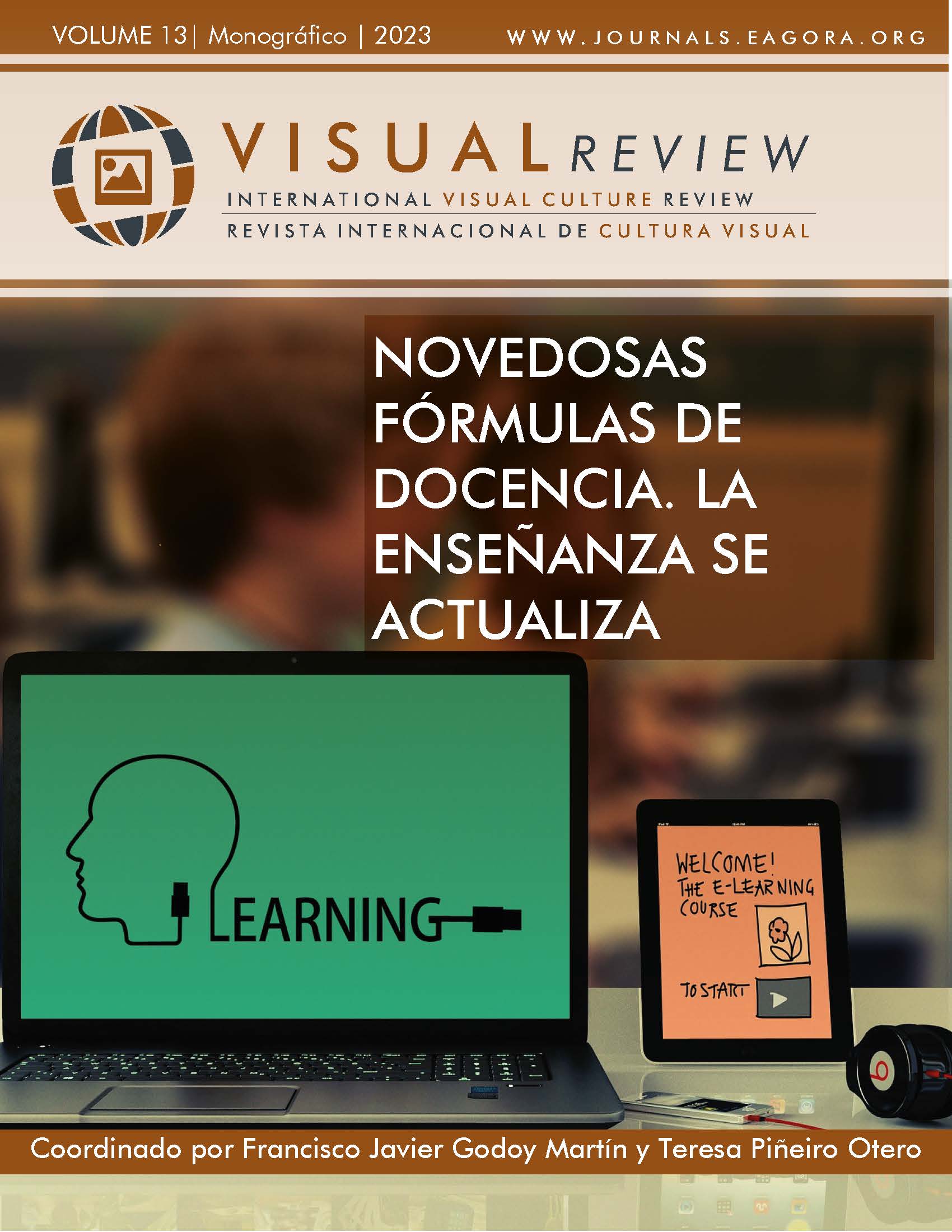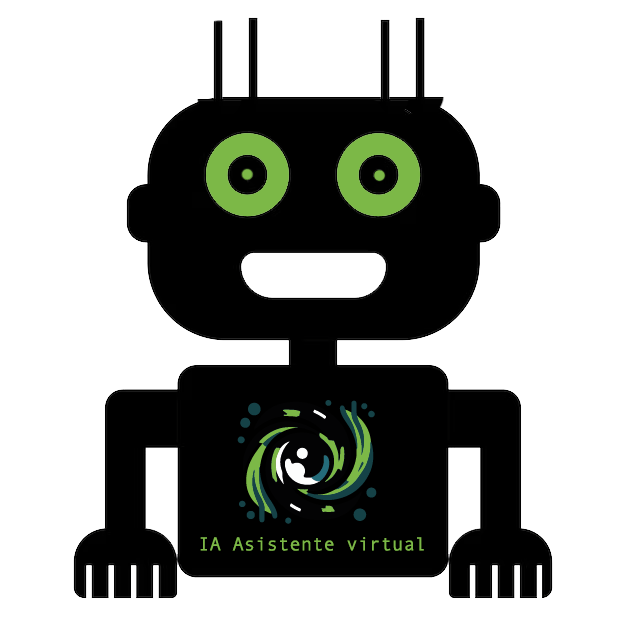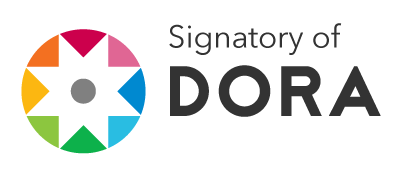From traditional learning to media apprehension
DOI:
https://doi.org/10.37467/revvisual.v10.4584Keywords:
Technology, Communication, Education, Apprehend, Appropriation, Virtuality, MediaAbstract
Students, teachers and citizens know the truths and realities through media products, with aggravating circumstances such as misrepresentation, falsification, spectacularization and decontextualization.
The general objective of this research is to analyze the developments, approaches and challenges of the use and appropriation of technology - communication - education interaction for media comprehension in the virtual or face-to-face classroom.
In this research it was found that educational systems today raise media literacy and revive educommunication without considering that technology says how, what and why it should be apprehended.
Downloads
Global Statistics ℹ️
|
421
Views
|
401
Downloads
|
|
822
Total
|
|
References
Area, M. y Pessoa, T. (2012). De lo sólido a lo líquido: las nuevas alfabetizaciones ante los cambios culturales de la Web 2.0. Comunicar, 19 (38), 13-20. https://acortar.link/fq7S8A DOI: https://doi.org/10.3916/C38-2012-02-01
Barquero, J. D., Cancelo Sanmartín, M. y Rodríguez Segura, L. (2021). Las competencias digitales como vehículo de la cultura organizacional universitaria. Revista Latina De Comunicación Social, 79, 17-33. https://doi.org/10.4185/RLCS-2021-1495 DOI: https://doi.org/10.4185/RLCS-2021-1495
Bisquerra, A. R., et al. (2004). Metodología de investigación educativa. La Muralla.
Blog de la lengua. (2022). ¿‘Aprender’ o ‘Aprehender’? https://acortar.link/jHPMdU
Cano, V. L. M. (2020). Concepciones docentes, usos de TIC en el aula y estilos de enseñanza. Universidad Pontificia Bolivariana.
Calderón, C. L. V. (2020). La educación virtual, un reto para los nuevos métodos de enseñanza y aprendizaje, que son tendencia global para el desarrollo profesional. [tesis de especialización, Universidad Nacional Abierta y A Distancia – UNAD]. https://acortar.link/eB0hVB
Del Rey, M. J. (1995). Mediología y comunicación: La república de los sentimientos, una nueva epistemología. CIC, 1, 157-181. https://acortar.link/xaO47e
Echeverri, Á. J. C. (2006). Historicidad de la tríada tecnología, comunicación, educación. Educación, comunicación, tecnología, 1 (1), 1-20. https://acortar.link/3JlhX6
Hernández, S. R., et al. (1997). Metodología de la Investigación. Macgraw - Hill Interamericana.
Guerrero, C. A., et. al. (2019). Impacto de la Educación Virtual en Carreras de Pregrado del Área de Ciencias de la Salud. Una Mirada de las Tecnologías Frente a la Educación. [tesis de especialización, Universidad Cooperativa de Colombia]. https://acortar.link/8Fk44
Gozálvez, V. (2014). Ciudadanía mediática: Una mirada educativa. Editorial Dykinson, S. L.
Latorre, I. E. L. et al. (2018). Las TIC, las TAC y las TEP: innovación educativa en la era conceptual. Universidad Sergio Arboleda.
Lima, M. S. (2005). La mediación pedagógica con uso de las tecnologías de la información y las comunicaciones (TIC). Instituto Pedagógico Latinoamericano y Caribeño (IPLAC). https://acortar.link/z4KBsl
Martínez-Huamán, E., Quispe Morales, R. A., Gutiérrez Mendoza, J., & García Rivas Plata, C. E. (2022). Gestión educativa y competencias: concepciones del docente universitario. Revista Venezolana De Gerencia, 27(7), 266-280. https://doi.org/10.52080/rvgluz.27.7.18 DOI: https://doi.org/10.52080/rvgluz.27.7.18
Quintana, A. (2006). Metodología de investigación científica cualitativa en A. Quintana y W. Montgomery (Eds.), Psicología: tópicos de actualidad. UNMSM.
Santibáñez V. J., Santiago, C. R., Pérez, M. C., Sáenz de Jubera, O. M. y Tejada, S. S. (2016). Competencia en comunicación audiovisual en un entorno digital en la enseñanza no universitaria: necesidades y carencias. Latinoamericana de Tecnología Educativa, 15(3), 127-139. 10.17398/1695288X.15.3.127
Sartori, G. (2000). Homo videns. La sociedad teledirigida. Taurus.
“Significado de Aprender”. En: Significado. Disponible en: https://www.significados.com/aprender/ Consultado: 3 de mayo de 2022, 5:35 pm.
Tunnerman B. C. (2008). Modelos Educativos y académicos. Hispamer. https://acortar.link/ICNsMH
Vergara, C. J. E. (2019). Herramientas digitales colaborativas para el fortalecimiento del aprendizaje en las aulas virtuales. [tesis de maestría, Universidad El Bosque]. https://acortar.link/AJoIe4
Vicente, M. y Martín, S. I. (2008). Una sociedad de pantallas: potencialidades y límites para la educomunicación. Comunicar, 16 (31), pp. 733-738. DOI:10.3916/c31-2008-03-074 DOI: https://doi.org/10.3916/c31-2008-03-074
Downloads
Published
How to Cite
Issue
Section
License
Those authors who publish in this journal accept the following terms:
-
Authors retain copyright.
-
Authors transfer to the journal the right of first publication. The journal also owns the publishing rights.
-
All published contents are governed by an Attribution-NoDerivatives 4.0 International License.
Access the informative version and legal text of the license. By virtue of this, third parties are allowed to use what is published as long as they mention the authorship of the work and the first publication in this journal. If you transform the material, you may not distribute the modified work. -
Authors may make other independent and additional contractual arrangements for non-exclusive distribution of the version of the article published in this journal (e.g., inclusion in an institutional repository or publication in a book) as long as they clearly indicate that the work was first published in this journal.
- Authors are allowed and recommended to publish their work on the Internet (for example on institutional and personal websites), following the publication of, and referencing the journal, as this could lead to constructive exchanges and a more extensive and quick circulation of published works (see The Effect of Open Access).













